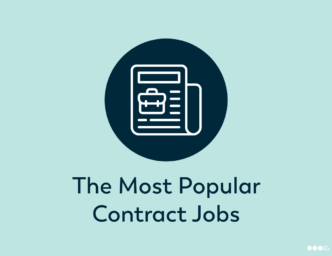Recruitment has always required a deliberate strategy, but we know it’s become more challenging since 2020. American employers are facing a significant talent and skill shortage, so recruiters and leaders must adjust their approach to attract experienced and engaged candidates.
Could those who’ve recently retired fill your gaps? One component of an effective recruitment strategy is tapping into the talent pool within the community of recent retirees who are looking to re-enter the workforce. Let’s dive in.
What is Unretirement?
Unretirement describes employees who have previously retired and either re-entered or want to re-enter the workforce. While the word is new, the concept is probably familiar to you. Even if you don’t have a friend or relative who’s gone back to work after settling into retirement, you may have recruited, hired, or worked with somebody who has.
According to a recent 2023 survey, as many as one in eight retired Americans are considering un-retirement in 2024. The same survey found that 25 percent of older Americans currently working had been retired at some point. Perhaps more surprisingly, 1.5 million retirees returned to work in 2021 alone, and a 2023 survey says nearly two-thirds of “recently retired workers” would consider returning to their jobs.
While some re-enter the workforce in their original field, others choose less stressful or different roles. The most common roles that attract experienced workers out of retirement are flexible, offer the option to work remotely, and have a social impact. For this reason, there are two potential paths back into the workforce for retirees:
- Into careers that align well with their previous education and experience, or
- Into entry-level, low-stress roles in a new industry (like sales associate or cashier)
Why do People Choose Unretirement?
While unretirement isn’t new, it is becoming more and more common. So why do those who’ve chosen the coveted life of relaxation elect to return to the workforce later? While putting your feet up sounds good, it doesn’t always meet expectations. The reasons are multifaceted and might include the following.
Restlessness
One reason that’s as old as time is restlessness. Just as they might have predicted before retiring, some people don’t find retirement as exciting as they thought they might. These candidates return to the workforce because retirement has left them restless, and they’re looking for a meaningful way to live life.
For these candidates, part-time work might satisfy their desire to stay busy, add value to society, and to slow down and take more time for leisure. Slightly related, loneliness in retirement can contribute to the return to the workforce, too.
Rising Cost of Living
Another reason we see more retirees looking for work is the economy and rising cost of living.
CNN highlighted stories of two retirees who were motivated to return to work as they watched their retirement accounts dwindle and the cost of living rise in the last few years. Although retirement is preceded by extensive planning, inflation and a potential economic recession were unpredictable as soon-to-be retirees made plans. As a result, many older Americans are looking for a way to supplement their income.
These workers are more likely to seek full-time employment and go back to their previous title, specialty, or level of responsibility.
Need for Healthcare Coverage
In some cases, unretirement is an option because they need to bridge the health insurance gap. Employer-sponsored plans can make healthcare more affordable for all workers, whether they’ve reached Medicare age or not. Reaching these candidates is easiest when you offer benefits to your part-time workforce, which can offer a semi-retirement with benefits to meet workers’ need.
Intrigued by Employer Offerings
In other cases, retirees aren’t looking for work at all when approached by a recruiter who speaks their “love language”—or says exactly what they need to hear to reconsider retirement and possibly jump back into the workforce.
Some offerings that may bring a retiree back into the workforce in a mutually beneficial role include:
- A great compensation package
- A flexible schedule
- Meaningful work
- Recognition of the candidate’s value
- Access to health benefits
Related: 16 Benefits & Perks at Work That Attract Employees
Tips When Recruiting Potential Unretirees
Recruiting retirees looking to re-enter the workforce can supplement your talent acquisition strategy and allow you to tap into a skilled and experienced workforce. To reach and connect with this audience:
- Tap into existing networks. Consider reaching out to professional associations, alumni networks, and other groups that cater to retirees or older workers. These groups can help you connect with potential candidates who might be interested in returning to work.
- Seek out passive candidates. Because so many unretirees aren’t even looking for employment when they choose to come back to work, locating those who have the talent requires more than posting on job boards. Consider keeping a pipeline of retired employees in your applicant tracking system (ATS), who you engage through newsletters and birthday cards, and recruiting passive candidates through networks like LinkedIn.
- Offer flexible work arrangements. Many retirees are only interested in re-entering the workforce if the position is flexible. Part-time, job-sharing, or remote work options might be more appealing.
- Emphasize the value of their experience. Highlight the value unretirees can bring to your organization based on their years of experience and expertise. Let them know early in the recruitment process that you value their skills and believe they have a lot to contribute.
- Provide training and development opportunities. Un-retirees who are changing careers or who have been at home for a while might worry that their skills are outdated or that the industry has changed too much since they exited. Offering training programs can ease worries and bridge the gap.
- Tailor your recruitment messages. Now that you know why people return to the workforce after retiring, you can adjust your messaging to speak to those needs. Do you offer a great health plan for part-time employees? Do you offer job-sharing or flexible scheduling? Include those details in your job posts to attract targeted candidates.
- Understand that most don’t want to come back to work. As we mentioned previously, one in six retirees have considered unretirement after being in retirement for four years. That means five in six haven’t. Handle these situations with care and understanding. Attracting un-retirees is meant to supplement a recruiting strategy—not be the basis of it.
Connecting with those open to unretirement can take your recruitment strategy to another level. You can’t afford to overlook this pivotal population, and focusing on passive candidates is critical for the widest pool.
Understanding why retirees come back to work can help you tailor your workplace and job ads for this population. Making small adjustments to your recruitment process ensures you reach the right population and speak to their needs. The bottom line? Adjusting your strategy to leverage this talent pool is necessary for attracting talent and staying competitive in today’s market.
Are You Looking to Fill A Skills Gap?
We know how tough it can be to fill a skills gap at an organization. If you’re looking to fill roles at your organization with experienced candidates, we can help.
Let us know your needs below!
We can provide a shortlist of candidates for your in as little as 48 hours. Questions? Call us toll-free: 855-485-8853


 by Patrick Glynn
by Patrick Glynn


 by Alexandra Woodford
by Alexandra Woodford 

 by Erin Ellison
by Erin Ellison 
 by Brita Long
by Brita Long